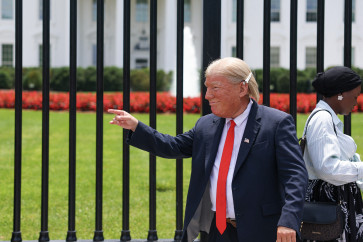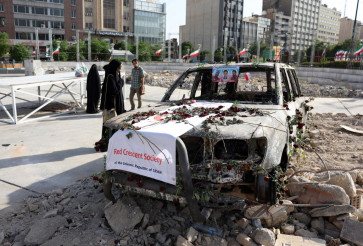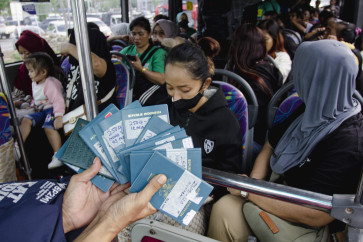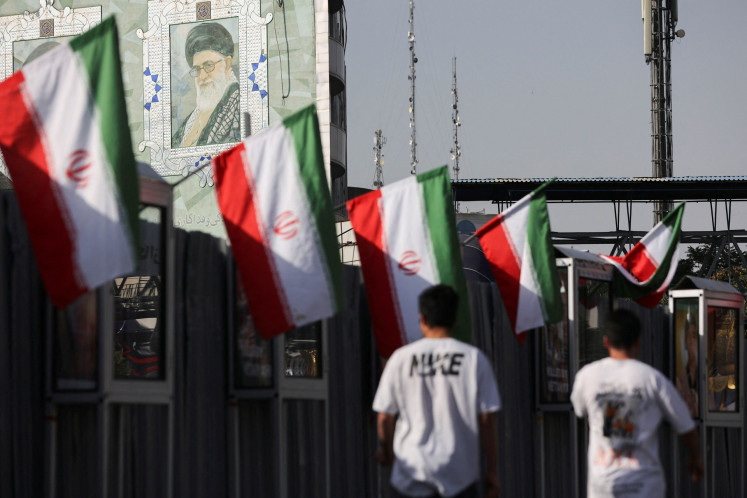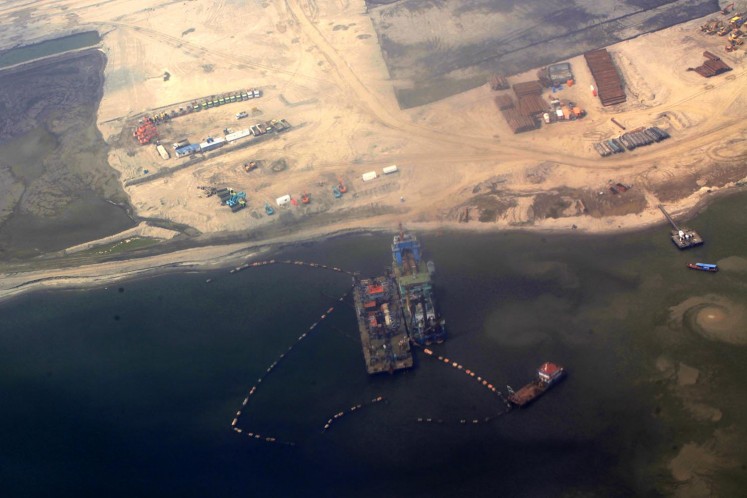Popular Reads
Top Results
Can't find what you're looking for?
View all search resultsPopular Reads
Top Results
Can't find what you're looking for?
View all search resultsWill Indonesian teas be as famous worldwide as Darjeeling?
Hunan dark tea (Courtesy of chineseteaconnoisseur
Change text size
Gift Premium Articles
to Anyone

Hunan dark tea (Courtesy of chineseteaconnoisseur.com)
Although Japan learned tea making from China, Japan has successfully made internationally well-known teas that are distinctively Japanese. India, which got tea seedlings from China, is internationally famous for its unique muscatel-flavor Darjeeling teas crowned by the West as the champagne of teas. What about Indonesia?
Indonesia’a best teas (mostly black teas and to a lesser extent, green tea and white tea) are produced by state-owned tea plantation companies (PTPN) in Sumatra and Java. They are normally exported and used for blends in destination countries with a few of them sold “as is”, such as Sumatra Oolong Barisan offered by TeeGschwender of Germany and Java Malabar black tea offered by Simpson & Vail.
Some others (such as Upton Tea Imports’ Java Green Gunpowder, Harney & Sons’ Java Golden Black Tea), however, have been discontinued, apparently
because they could not stand out to make the drinker want more or they were considered mediocre, pretty average or inconsistent.
Another top-grade black tea from Sumatra is from the Kayu Aro plantation in Kerinci, Jambi, that the Dutch started in 1925. It was one of the quality, flavorful teas produced by the Dutch during their occupation of Indonesia that reportedly earned praise in Europe and was put in the same class as Ceylon and British Indian teas.
Even so, no Indonesian black teas, not even Kayu Aro that was reportedly favored by the former three queens of the Netherlands, have ever reached worldwide fame and demand as the top Darjeeling does, both now and then, perhaps because they lack the unique charm and exquisiteness of the latter.
On the other hand, there are private Indonesian companies that manage to produce top quality Chinese-styled teas, like New World wine producing countries attempting to mimic Bordeaux reds. But these made-for-export teas, despite being made in Indonesia, are distinctively Chinese.
Although they may redefine international perception of Indonesian teas, they are unable to match the top of top Chinese teas they emulate in terms of depth of flavors, exquisiteness, typification and originality.
Well, there is the little-known, savory, nutty, low-land green tea from Jebus on Bangka Island made by the sub-district’s local Chinese, which is rather atypical for Chinese green tea because of its toasty flavor that complements the toastiness of the region’s fish cracker. But, can this peculiarity win international approval?
White tea is another area worth deeper exploring. The one from Kabepe Chakra is the sweetest I have ever tasted. The liquor was mind-blowingly like drops of nectarine honey. However, given that Indonesia has long been traditionally and internationally known abroad for its quality black teas, it should continuously pursue consistency and excellence in producing them with its own style like that of Nepali fine black teas.
The only Nepali golden needle black tea I ever tasted was incredible. The well-balanced, delicious tea has a body that showcases a lively interplay of fruity, malty and floral aromas. Presented by a Tealover Community moderator, Se Tjie, during the community’s latest tea potluck, the tea was intriguing and as stunning as the more expensive Darjeeling. It has its own unique style different from Darjeeling due to its isolated development.
Rarely known outside of the country until recently, black tea from Nepal is not yet as highly esteemed as Darjeeling. So, even the finest ones are still reasonably priced. “Approximately Rp 150,000 [US$11.47] per 100 gram,” said Se Tjie who had purchased it at a shop in Kathmandu.
Of course, Indonesia is not Nepal. It does not have high altitude areas combined with abundant rainfall (and snow melt) that provide ideal conditions for tea bushes to thrive like in Nepal, and the neighboring Indian regions of Darjeeling, Dooars and Sikkim that enable them to produce exquisite tea that no other region on earth can produce.
Unlike Nepal and its neighbouring Darjeeling region, where the Camellia sinensis variety is the original strand of cultivar planted, the prevalent cultivar in Indonesia is the assamica variety with a less complex flavor profile.
So, if gaining Darjeeling-like reputation sounds too ambitious, Indonesia should explore its tropical, archipelagic, and topographical features and find the most suitable techniques to make teas that enable drinkers to get a unique sense of flavors that characterizes their respective plantations as favorably as possible. The rest is about intelligent marketing and promotion.

